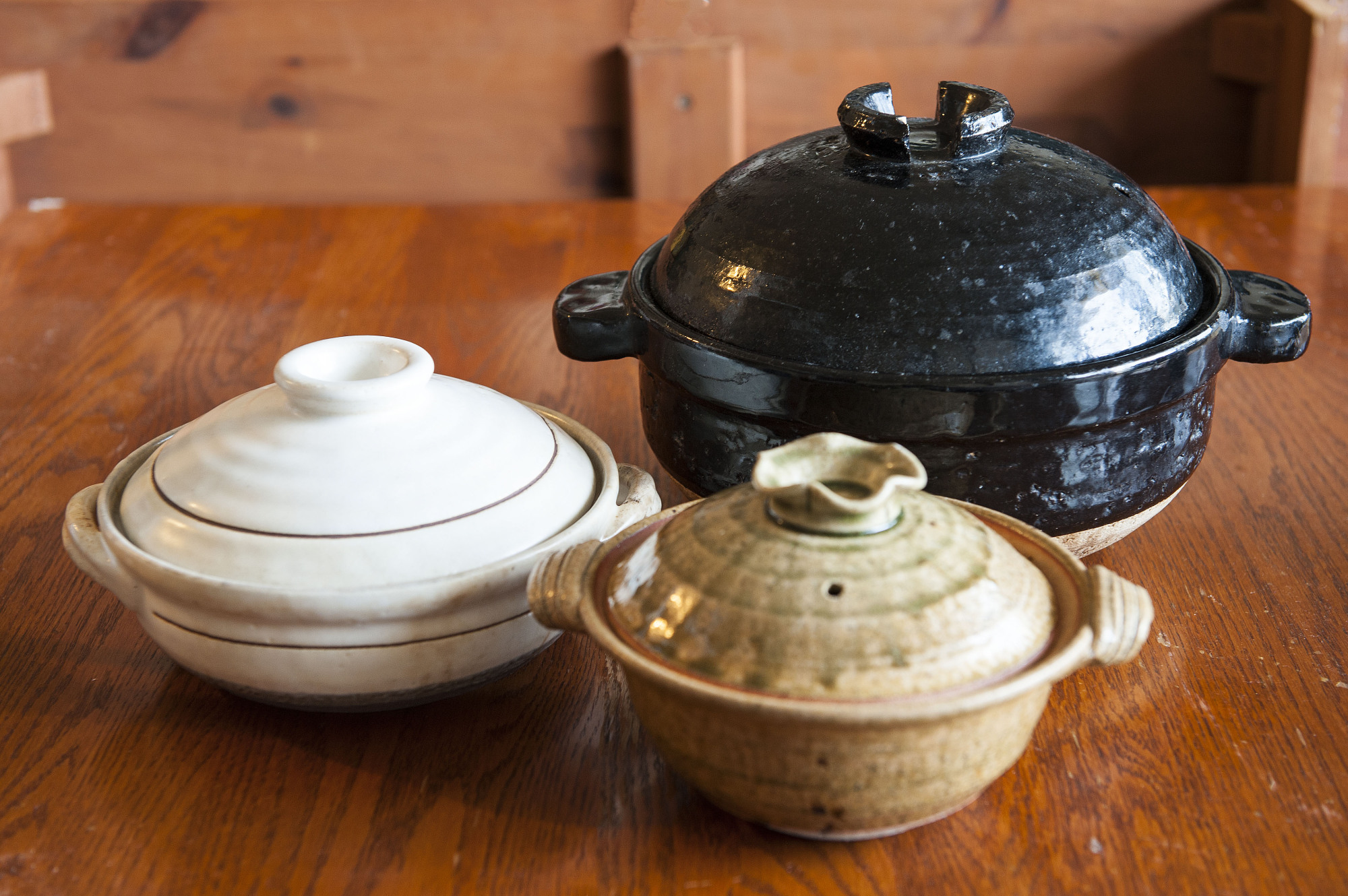Despite the plethora of modern equipment in a Japanese kitchen, the cookware that has made the biggest comeback in recent years has a long history that can be traced back to prehistoric times. That's the donabe, a lidded, heatproof earthenware pot with a matching vented lid. The shelves of trendy cookware stores are lined with a huge array of donabe at this time of year as the weather turns cooler. There are even restaurants that specialize in donabe cooking.
The biggest reason for the return of the donabe is the ever-increasing popularity of nabe, tabletop hotpot cooking. Just like a pot roast or a roast chicken may evoke warm memories of happy meals in other parts of the world, a nabe is the quintessential family meal in Japan. Another reason may be that donabe come in so many colors and designs these days, from the colorful and modern to the traditional. They look great on the table as well as being practical cooking containers.
Donabe aren't just for tabletop cooking, however. Because of its thick clay walls, a donabe retains heat very well, so that food will both remain warm for a long time and also continue cooking in residual heat. Many people swear that the best-tasting rice is cooked in a donabe, since each grain stays firm yet still just sticky enough, cooked through evenly and tasting good even when cold. Donabe are also ideal for the slow, gentle cooking of stews, soups and nimono (simmered dishes). They can be used for steaming and even smoking, too.


















With your current subscription plan you can comment on stories. However, before writing your first comment, please create a display name in the Profile section of your subscriber account page.